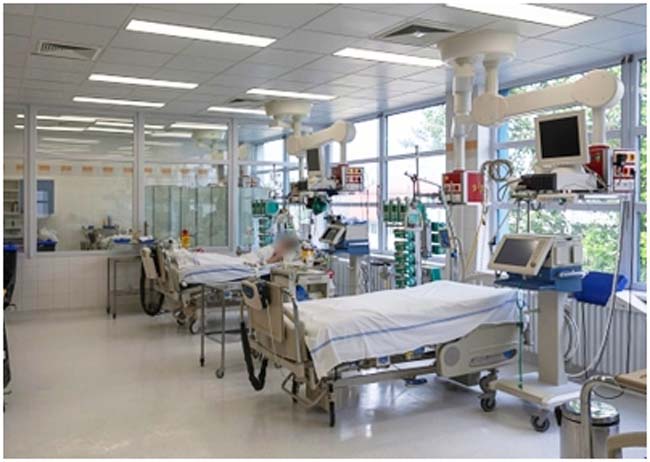
Recently, it was flashed in the media that people are struggling outside the hospitals to get a bed. Several celebrities have also conveyed that they had to wait for hours to get a bed during this Covid crisis.
Immediate parallels are drawn with the UK and the USA. In other words, how our systems in India are obtuse and uncaring. They have no measure of individual pain and hence people have to wait for hours to get a bed in the hospitals.
In a recent study conducted in the National Capital Region (NCR), it was examined as to how long it took a typical patient to get a bed when he/she reached the hospital. A sample of 284 attendants of Covid patients reported that it took nearly two hours for them to get the person admitted to the hospital.
Some did start attending the patient in about 45 minutes but the total time for admission and start of some form of treatment was two hours. This data pertains to non-trauma hospital admissions only.
Now, is the average time of two hours less or more is something that needs to be examined. Furthermore, can anyone get admitted to super-specialty hospitals such as AIIMS, PGI, etc. and can anyone get admitted to a hospital in the US and the UK directly?
One hundred per cent of the respondents had come to the hospital without having visited any medical doctors prior to coming to the hospital. Sixty-four per cent had sought a telephonic advise and the remaining were advised by their attendants, family members, or/and self to go to hospital as they felt worsening of symptoms. Therefore, it would be interesting to see if this is possible in the US or the UK.
The average wait-time in the A&E (accidents and emergency) area in the UK was well above six hours prior to 1997. It was under Prime Minister Tony Blair that a key target was established for the National Health Service to reduce the maximum for a patient to wait in the A&E department to four hours.
While this appeared to be an uphill task at that time, it was found that even if this was achieved in majority of the times, it would be an extra-ordinary success for the National Health Service in the UK.
The results were less than encouraging. In an article written by John Carvel (2003) in The Guardian and later cited in the paper by Kelman and Friedman in 2009, it was reported that two-thirds of NHS A&E department in England faked the data on improvements in wait times. In other words, wait-time remained abysmal.
According to an article in Harvard Business Review written by Nicos Savva and Tolga Tezcan in 2019, the average wait-time for patients entering emergency in the US is one-and-a-half hours. It was reported in the same article that patients who arrived in the emergency with broken bone had to wait on an average for 54 minutes. Consequently, I am not sure if the wait of two hours for patients to be admitted is high or low.
Every single minute can be excruciatingly painful for a person before receiving care and getting admitted. However, I am not sure if we still have fast enough systems across the world to address this matter.
Second, can a patient directly walk into a hospital in the UK and the US? Both have a referral system. In other words, all those who are eligible will have a primary care physician (general physician). This primary care physician refers the patient for diagnostics and further treatment. In other words, the patients must be referred by their primary care physicians to the hospitals.
It is only in emergency situations that the patient can come to a hospital directly. However, in India's context, most of the patients who come to the OPD do not go to the primary healthcare centers, general physicians, mohalla clinics etc. before coming to the hospitals.
The doctors in India continue to provide care to hundreds of OPD patients in government and non-government hospitals daily without turning anyone away. It must be recognised that the Indian healthcare system therefore is least discriminating globally.
While patients in Indian OPDs come and wait for hours, they are given care nevertheless by our doctors in the most effective manger given the circumstances. One hundred per cent of the respondents stated that they were able to get medical advice on phone or in person within hours.
When asked to estimate the time, 94 per cent of the respondents stated that they could manage to get a doctor on the phone in less than an hour and 88 per cent were able to schedule an appointment with a doctor the same day.
However, it is not easy for patients in some of the advanced countries to get a doctor's appointment on the same day or the next day. The Commonwealth Fund International Health Policy Survey of Eleven Countries shows the percentage of adults who were able to get a same-day or next day appointment when they needed care.
It is interesting that most of these countries have population (other than the US and the UK) nearly that of Delhi state or even lesser. The UK's population is nearly the same as that of Rajasthan. The delivery of healthcare remains and will continue to remain challenging due to the size of our population and the resources available, but not because of the people who are delivering the services.
Consequently, while we must continue to strive to find ways to improve, augment, and innovate, but at the same time, it may be a bit more useful to be appreciative of the healthcare providers and the /healthcare system in our country.
(Professor Dheeraj Sharma is the Director of IIM Rohtak. The views expressed are personal)
